By Nicol Juratovac
The value of the takeaway is one that firefighters can use as part of their arsenal as they continue their pursuit to become the best firefighters they are capable of becoming. The takeaway is something that is incumbent upon all firefighters to share with one another to make each other better, which in turn, makes the entire firefighting team better. Takeaways are not about being a minimalist, with the work ethic mantra of “good enough for government work.” Rather, it is about a desire to learn the profession and to excel in it. It is about being the above-and-beyond firefighter, someone who aspires to be the best.
Every fire presents takeaways that ought to be shared. The tailboard is probably the best place to conduct a briefing of what went well and what left something to be desired, and it’s most effective when done right after the fire. But the atmosphere at the tailboard must be one where everyone feels safe and welcome to share their lessons learned. The hardest part for firefighters may be to be vulnerable, lest they are ridiculed, or worse, blamed for what went wrong. This positive setting can be secured by the incident commander (IC), who ensures a safe learning environment for all. How else will firefighters feel like they can share with the other members what they may have done better?
ICs can ensure firefighters’ buy-in by starting the tailboard debriefing by pointing out various things that went well. This is like “sandwiching,” where a positive is followed by something less so, which is then followed by another positive. This way, no one feels that the takeaways consisted only of things that did not go well. It is the IC’s job to facilitate this discussion and guide the interaction in a positive, uplifting manner so that everyone feels confident and eager to employ their lessons learned at their next fire.
So, what are some examples of takeaways that are shared at the tailboard? Here are some takeaways reviewed during this past year:
Tailboard Takeaway #1
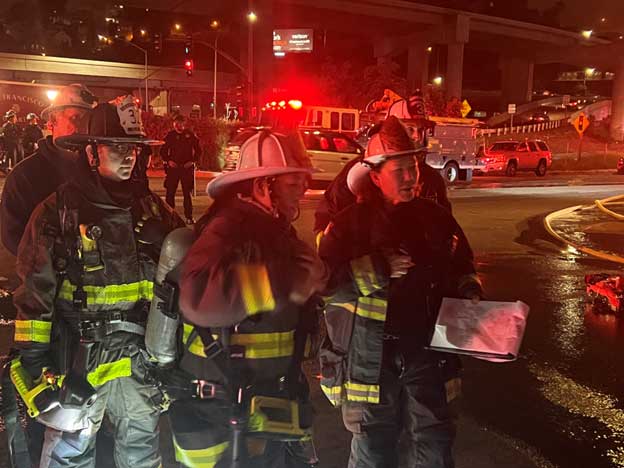
Don’t let the command post (CP) be a lonely place. Try to have at least one crew in reserve at the CP. Otherwise, consider striking another alarm, depending on whether the incident is getting worse. If you know that the incident will likely grow into an extended operation, consider maintaining a complement of a one alarm at the CP. If you are responding on a first alarm, try not to put every crew to work right away. Stagger the units with the goal of quality over quantity. After all, most fires in America are put out by two engines and a truck. If you are getting three engines, two trucks, two battalion chiefs, one assistant chief, a heavy rescue squad, paramedic captain, and a medic unit on a full box response, all you really need is the first engine and first truck to investigate. If the incident develops into a working fire, then two engines and two trucks can operate at the incident while you have the third engine at the CP until firefighters are needed to go to work, depending on fireground developments. Conversely, do not hesitate in striking a second alarm if you think you need it. Considerations in striking a second alarm may include time of day (e.g., 0300 hours), high life occupancy (e.g., apartment building), hard to get to addresses (e.g., up winding hills), heavy winds causing a blow torch effect on the fire, etc.
Tailboard Takeaway #2
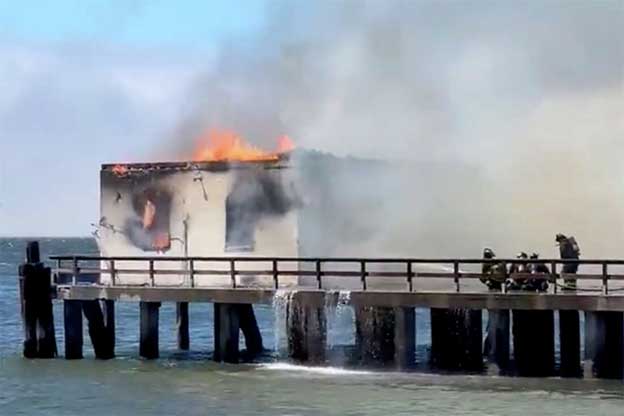
Stop the love affair with the 1¾-inch hoseline. Sometimes, it is time for a break up. Start a love affair with the 2½-inch line. Do not let your department’s culture eat safety for breakfast. In the profession of firefighting, it is about results. You get more bang for your buck when operating a 2½-inch hose versus an 1¾-inch. This is particularly important when fighting a fire in a set back structure where a long lead is warranted and the structure is compromised, where a defensive posture is warranted. Remember to stay 1½X the height of the building, as well, when operating under these conditions. This structure eventually fell into the water once master streams were applied both from the 2½-inch line and, eventually, from the fire boat, which had been called by the IC.
Tailboard Takeaway #3
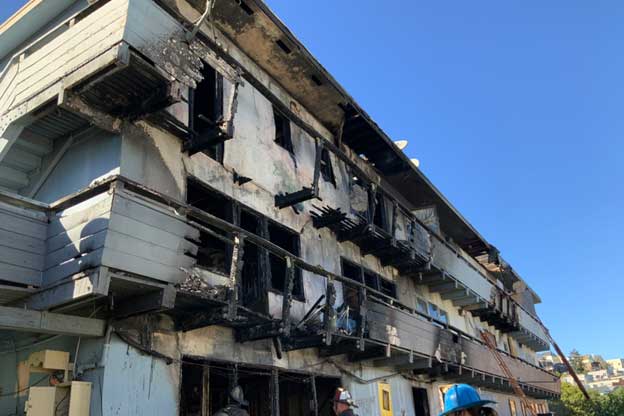
Firefighters should take advantage of the early Christmas gift and perform the 360° perimeter check, if doing so is an option. This is particularly the case when the fire building is detached on one or more sides. This perimeter check is critical to perform by the first-in engine company. If that is not possible due to an immediate rescue situation that the engine is faced with—thereby limiting staffing—the first-in truck company can gain intel of the perimeter from the roof. Either way, someone has to do it, or else firefighters will “find” themselves dangerously and sometimes unknowingly operating above the fire. A line must then be deployed to this location. The IC must communicate that this line is being deployed, ensuring that there are no opposing hose streams and that crews have exited any areas susceptible to flow path.
Tailboard Takeaway #4
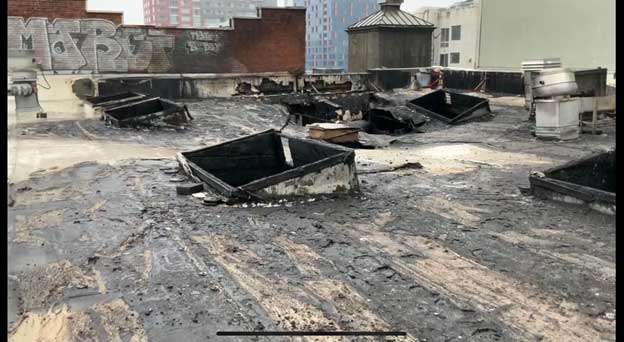
Be clear when you communicate to the IC that the roof has collapsed. If it is just one section of the roof that has collapsed, say exactly that, particularly if the rest of the roof is tenable and not compromised. Dimensional lumber takes a long time to collapse in its entirety, and if a section of the roof is compromised, learn to assess conditions so you and your crew can continue to operate effectively and safely. This, in turn, will allow companies to continue operating inside getting water on the fire and moving in aggressively and intelligently.
TAILBOARD TAKEAWAY #5
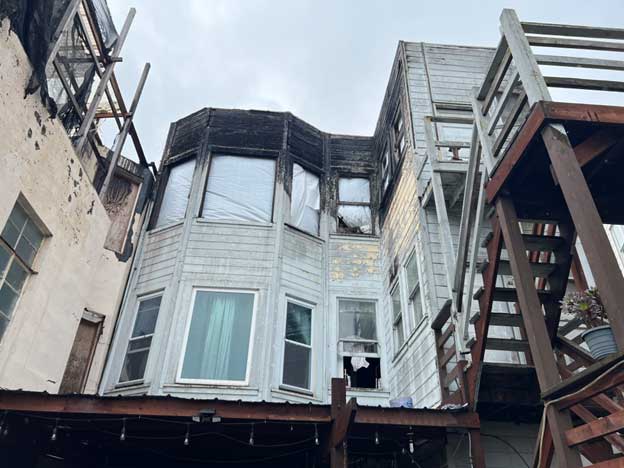
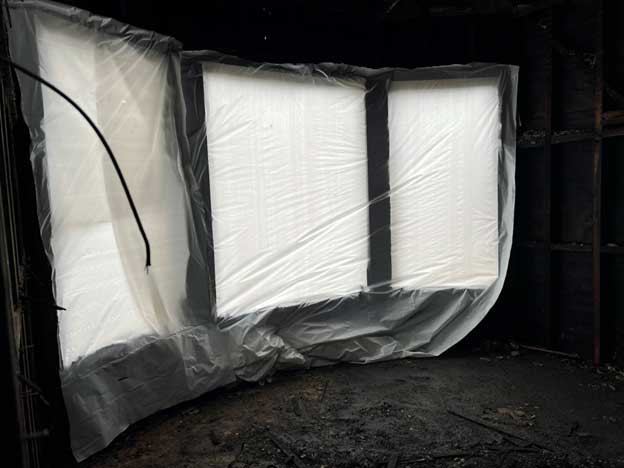
No one ever said they found a victim while they were conducting a search standing up. Entering any structure standing up could lead you to a window with a 30-foot drop or more. It could also lessen your chances of finding a victim overcome by smoke. An interior aggressive search is one of the most demanding tactics on the fireground, and it must be treated with the utmost respect and attention it deserves. Standing up when entering a fire area is just plain lazy and dangerous. Complacency kills. The search crew is supposed to be comprised of the Green Berets of the fire service, so they must act like. It. The victims are counting on us to be that for them.
As one can see, takeaways are a part of everyone’s development as a professional, aggressive firefighter. They are to be shared with your firefighting crew members, and, hopefully, employed so that we can all operate effectively and safely for us and for the citizens we swore to protect.
Nicol Juratovac has been with the San Francisco (CA) Fire Department since 1997, beginning at the rank of firefighter/EMT, and is an assistant chief. She graduated from the National Fire Academy Executive Fire Officer program and obtained California State Fire Training’s many certifications.

